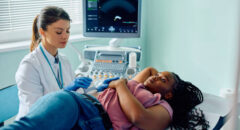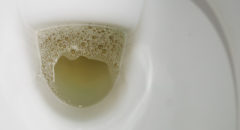
If you haven’t heard of organ and stem cell transplants by now, you’re in for quite the surprise. Cutting-edge procedures that are truly revolutionizing healthcare, these cell-based treatments can do a lot for all kinds of conditions.
But it’s not all unicorns and roses. Despite their life-saving potential, stem cell transplant procedures also come with a host of side effects.
After the procedure, as the immune system strives to restore its function, the body is susceptible to a full range of issues. Everything from discomfort and pain to illness and full-blown disease development.
Fortunately, many of these side effects can be mitigated or minimized with the right treatments.
Let’s cover six scientifically backed methods to address these issues post-transplant procedure.
1. Antibiotics, Antivirals, and Antifungals
Perhaps the most common challenge following a stem cell transplant is the suppression of the immune system. This can result in infections, weakness, fatigue, and other health issues.
But here’s the good news. Many preventative measures, such as antibiotics, antivirals, and antifungals, can all make a huge difference in this problem. These medications protect against potential sickness from bacteria, viruses, and fungi, a necessity post-transplant.
Specifically, antibiotics work by offering broad-spectrum support in the early stages of transplant recovery. This can allow your immune system to build back naturally, without having to fight off problematic bacteria.
Then you have antivirals. As the name suggests, this class of medicines helps combat particularly troublesome viral infections. Many patients post-stem cell transplant are vulnerable to viral infections from things like cytomegalovirus (CMV), Epstein-Barr virus (EBV), and herpes simplex.
Fortunately, antiviral medications, such as acyclovir or foscarnet, reduce the risk of infection and severe complications.
And finally, antifungals help by warding off pesky fungi that love to fester and infect when you least expect it. Some infections, like those triggered by Candida or Aspergillus, can be treated with medications such as fluconazole. These medicines thwart the growth of fungus, making it significantly easier to recover post-transplant.
RELATED: Stem Cells: What You Need to Know
2. Addressing Graft-Versus-Host Disease (GVHD)
Graft-Versus-Host Disease (GVHD) most commonly affects patients receiving either a stem cell or bone marrow transplant. This happens because donated immune cells (the graft) attack the patient’s immune system, which they see as a foreign adversary.
Common signs of GVHD include skin rashes, digestive issues, and liver damage.
To treat GVHD, doctors usually prescribe immunosuppressive drugs, as these will weaken the activity of the donated immune cells. Corticosteroids are typically the first line of defense, as well as immunosuppressive agents like tacrolimus or cyclosporine.
Over time, these drugs reduce the immune system response and limit inflammation and tissue damage.
If immunosuppressive drugs are not sufficient, biologic agents may be employed to target inflammatory pathways associated with GVHD.
3. Pain Relievers for Mouth Sores
You may not think of mouth sores as being associated with transplants, but they’re actually quite common following stem cell procedures. In many cases, chemo and radiation are used in conjunction with stem cell transplants, which can further the likelihood of developing mouth sores.
For anyone who has ever had mouth sores, the problems are obvious. In addition to pain and discomfort, sufferers may lack vital nutrients due to an inability to drink or eat. Even speaking may become difficult, which is why proper treatment is critical.
The good news is, that managing these sores is not overly difficult. One can treat them by using pain relievers such as acetaminophen to address mild discomfort. For more severe cases, topical analgesics, such as lidocaine-based gels, can help numb the affected area.
In the most severe cases, patients may use opioid painkillers or even specialized mouthwashes with anesthetic and anti-inflammatory properties. As always, practice good oral hygiene, brush regularly, and ensure you are limiting sugar and acidic foods in your diet.
4. Iron Supplements Post-Blood Transfusion
Anemia, wherein the blood is lacking red blood cells, is a common condition after a transplant. This usually occurs because the body loses blood during the transplant, as well as due to side effects from radiation and chemo.
This is where blood transfusions come into play. These transfusions help restore the body’s normal blood values, but may also pose a risk: too much iron.
If you have too much iron in your system, the results can be life-threatening. Your liver, heart, pancreas, and other organs can all be affected, potentially facing lethal or long-term consequences.
Fortunately, something called iron chelation therapy is often effective. This uses medicines to bind to the surplus iron and remove it from your system. Other times, a less invasive approach with oral iron supplementation may be advised.
Your healthcare team can monitor your levels, ensuring everything is appropriate and balanced.
5. Dealing with Fatigue
We all get tired, but post-transplant fatigue is an animal all its own. One of the more debilitating side effects of a stem cell procedure, fatigue can contribute to a whole host of issues. It can hamper the body’s ability to recover, respond to medication, and function properly.
There are several ways to address this. Believe it or not, low-impact, consistent exercise such as simple walks or yoga can help you improve your energy and become healthier overall. You should also seek a diet filled with vitamins, minerals, and proteins, using supplements if necessary.
Kale, almonds, and lean meats like salmon, eggs, and chicken are all important foods to consider.
You also need to consider your sleep. Keep your room cool and dark, and always cut off electronic exposure at least an hour or two prior to bedtime. In conjunction with sleep, be sure to rest strategically. Don’t remain inactive for long periods. Balance periods of rest, engage in light activity, and keep your sleep schedule regular.
So-called power naps can go a long way.
6. Find Mental Health Help
Finally, seek emotional support when needed. Even if you aren’t feeling ‘depressed’ per se, you need to take care of your overall mental well-being. Infrequent feelings of anxiety, sadness, and isolation are not uncommon, so don’t feel alone in your plight.
Many mental health resources, such as psychological counseling, therapy, and support groups, can all help. Cognitive Behavioral Therapy (CBT) is especially useful, as it can help you replace negative feelings, thoughts, and behaviors with more positive ones.
In addition, consider mindful techniques. There are many great videos on YouTube and TikTok, as well as books on Amazon, that can help you tap into this treasure trove of positivity.
At the end of the day, dealing with post-transplant complications takes a comprehensive approach. You want to mind all aspects of your health, from the mental and physical to even the spiritual. Through the use of lifestyle modifications, medicines, and simple interpersonal connections, you can make the changes you truly want.
This, in turn, can help you recover faster than you ever realized, and put you well on your way to being back on your feet, and doing what you love!









